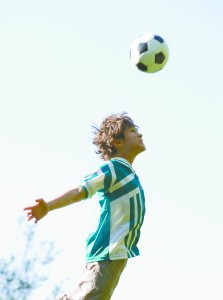By Sarah Crane
 The first day of August heralds a scramble for any parent: preparing our children for heading back to school, choosing the “right” backpack to pair with the “cool” lunchbox, and grappling for the last crayons in the Target school supplies section. As parents, we are devoted to improving our children’s academic abilities by supplying them with the necessary physical “tools to succeed.” However, the most important tool—the brain—can sometimes be overlooked, and even neglected.
The first day of August heralds a scramble for any parent: preparing our children for heading back to school, choosing the “right” backpack to pair with the “cool” lunchbox, and grappling for the last crayons in the Target school supplies section. As parents, we are devoted to improving our children’s academic abilities by supplying them with the necessary physical “tools to succeed.” However, the most important tool—the brain—can sometimes be overlooked, and even neglected.
Beyond the classroom, many children compete in athletics (whether regulated or unregulated). Our little superstars are taught to either score goals or defend them—at any cost. Sometimes, that cost involves a blow to the head or the body that can result in a concussion. Concussion awareness has rapidly expanded over the past few years, but little has been proposed as to how to heal a concussion.
What is a concussion? When the head (or body) is hit, the force of the injury can cause the brain to move around in the skull, causing bruising to the outermost parts of the brain. (If the injury is more severe, more intimate parts of the brain can be affected as well.) Additionally, the brain suffers a disruption in its normal blood flow, which is why a brain injury can be caused by either a blow to the head or a blow to the body. As the blood flow is restored in the brain, something called a “reperfusion injury” can occur – inflammation damages the brain tissue.
Are there treatment options? Hyperbaric oxygen therapy (HBOT) helps heal traumatic brain injuries (TBIs) by reducing the extent of reperfusion injuries by decreasing the amount of inflammation in the brain and providing the brain with a readily available supply of oxygen. And, since HBOT is a therapy where pure oxygen is administered in a pain-free, pressurized environment, brain healing can even be accelerated.
As someone who works in the TBI field, I am acutely aware that brain injury is not something that the average person wakes up and thinks about. More often than not, brain injury is a phenomenon that is only acknowledged when it directly affects you or a loved one. Then, it becomes your world.
About a month ago, I was in a car accident. A car hit my passenger side in an almost perfect “T-Bone.” My car was smaller, lighter, and lower to the ground than the other driver’s, which meant that the force of her car hitting mine sent a shock wave through the car. Neither car was moving above 30 m.p.h. I did not experience any loss of consciousness, I did not hit my head, I had no cuts, scrapes or bruises. But, I did have a concussion. That night, after intense insomnia, I went to bed with a ringing headache. The next day, I realized I had forgotten how to tie a bow. I stood there, fumbling with the useless pieces of string, trying to make sense of them. Throughout the week, I experienced a term that I hear many of our TBI patients use: foggy. The easiest way to describe it, is that I felt like I had a buzz from alcohol—24/7; a buzz that would not dissipate. Later that week, in the grocery store, I swiped my card to make the purchase, but my mind went blank and I forgot what the next necessary step was to complete my transaction. It is difficult to describe how suddenly desolate, fearful, and incompetent I felt.
Currently, I am in an Executive MBA Program at Florida Atlantic University. As a student, I have had to swallow my pride and ask for academic extensions. As an adult, experiencing this humbling enlightenment, I cannot imagine how difficult it is for children experiencing these TBI symptoms. For, as I was alone, children are not — they have their peers, whom they worry about being embarrassed in front of. Many children keep quiet about experiencing concussions—they worry about being teased by their peers or letting down their parents, teammates, or coach. As a result, many children may try to minimize their symptoms, and consequently, academic performances suffer, and they begin to withdraw from normal activities and friends.
I cannot urge parents enough to be proactive in addressing the possibility of a concussion. Asking how they feel after they come off the field (especially after a bad fall or blow to the head) may be a more accurate way of detecting concussions. These are invisible injuries that need to be taken seriously. After all, concussions are what everyone is afraid to call them: traumatic brain injuries.
If my child experienced a concussion, I would immediately seek HBOT to help them heal, because it is currently one of the best options for treatment of traumatic brain injuries. Furthermore, this faster healing process could allow our children to feel more comfortable in admitting symptoms of a concussion, so you can pursue treatment. It’s not only about getting a child back on the field, but leveling the field for the child to heal and succeed in every part of their life.
www.palmbeachhyperbaric.com
561.819.6125
Check Also
WHAT IS MY CIRCADIAN RHYTHM AND WHY DOES IT MAKE ME FEEL SO “OFF”
By Renee Chillcott, LMHC Have you heard terms such as “biological clock” or “biorhythms”, or …
 South Florida Health and Wellness Magazine Health and Wellness Articles
South Florida Health and Wellness Magazine Health and Wellness Articles




